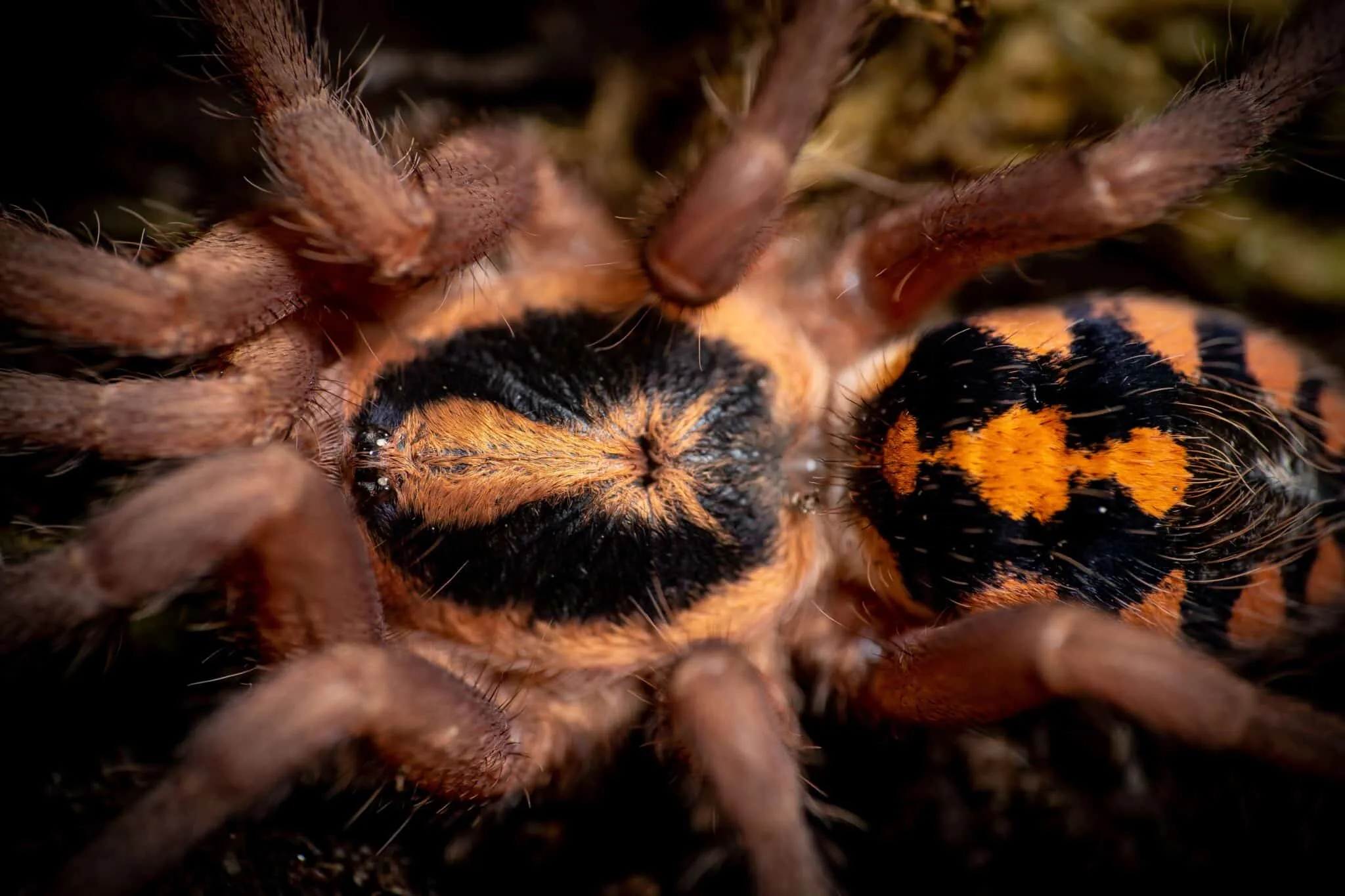What is a Pumpkin Patch Tarantula (PPT)?
The Pumpkin Patch Tarantula (PPT), scientifically known as Hapalopus sp. ‘Pumpkin’, is a captivating terrestrial tarantula species, highly sought after by both novice and experienced arachnid enthusiasts. Its common name is derived from the vibrant orange coloration of its legs and carapace, which often resembles the hues of a pumpkin. Native to the tropical regions of South America, the PPT has gained popularity due to its manageable size, relatively docile temperament, and striking appearance. These spiders are known for their hardy nature, making them a good choice for those new to tarantula keeping. Understanding the basics of their biology and care, especially their growth rate, is key to providing a thriving environment for these fascinating creatures. The PPT’s growth rate is influenced by a multitude of factors including diet, temperature, and molting frequency, all of which contribute to its overall health and lifespan.
Physical Characteristics of a PPT
The PPT boasts a distinct appearance that makes it easily recognizable. The most prominent feature is its bright orange coloration, which varies slightly depending on the individual tarantula and its maturity level. The legs and carapace (the top shell of the cephalothorax) showcase this vibrant hue, contrasting with a darker abdomen often covered in fine hairs. PPTs are relatively small compared to some other tarantula species, with mature females typically reaching a leg span of around 2 to 3 inches. Males are generally smaller and may exhibit slightly different coloration. Their body is divided into two main parts the cephalothorax, which houses the head and thorax, and the abdomen, which contains the digestive and reproductive organs. The presence of chelicerae (fangs) is another characteristic, used for capturing and subduing prey. The overall appearance of a PPT is a blend of beauty and strength, reflecting its place in the ecosystem.
Habitat and Distribution of PPT
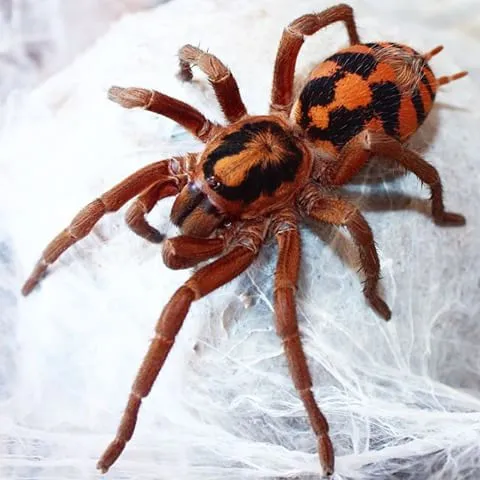
Pumpkin Patch Tarantulas originate from the tropical rainforests of South America. They are commonly found in countries such as Colombia and Venezuela, where they inhabit warm, humid environments. In their natural habitat, PPTs typically reside in burrows or under leaf litter, providing them with shelter from the elements and predators. The substrate in these areas is rich in organic matter, offering a moist environment that’s essential for their survival and molting process. Understanding their natural environment is crucial when replicating their habitat in captivity. Providing a similar environment helps the tarantulas feel secure and reduces stress, contributing positively to their growth and overall well-being. Maintaining appropriate temperature and humidity levels, mimicking their natural conditions, ensures a healthy and thriving PPT.
Top 5 Growth Facts of Pumpkin Patch Tarantulas
Fact 1: Molting and Growth
Molting is a fundamental process in the life of a Pumpkin Patch Tarantula, and it directly dictates their growth. As tarantulas have an exoskeleton, they must shed this outer shell to grow larger. This process, known as molting, involves the tarantula forming a new, larger exoskeleton underneath the old one. The frequency of molting decreases as the tarantula matures. Spiderlings molt more often, sometimes every few weeks, while adults might only molt once or twice a year. After molting, the tarantula is more vulnerable and requires time to harden its new exoskeleton. During this period, it is important to provide a secure and stress-free environment to prevent injuries and encourage proper hardening. Molting is a sign of a healthy and growing PPT, showcasing its adaptation to the environment.
Understanding the Molting Process
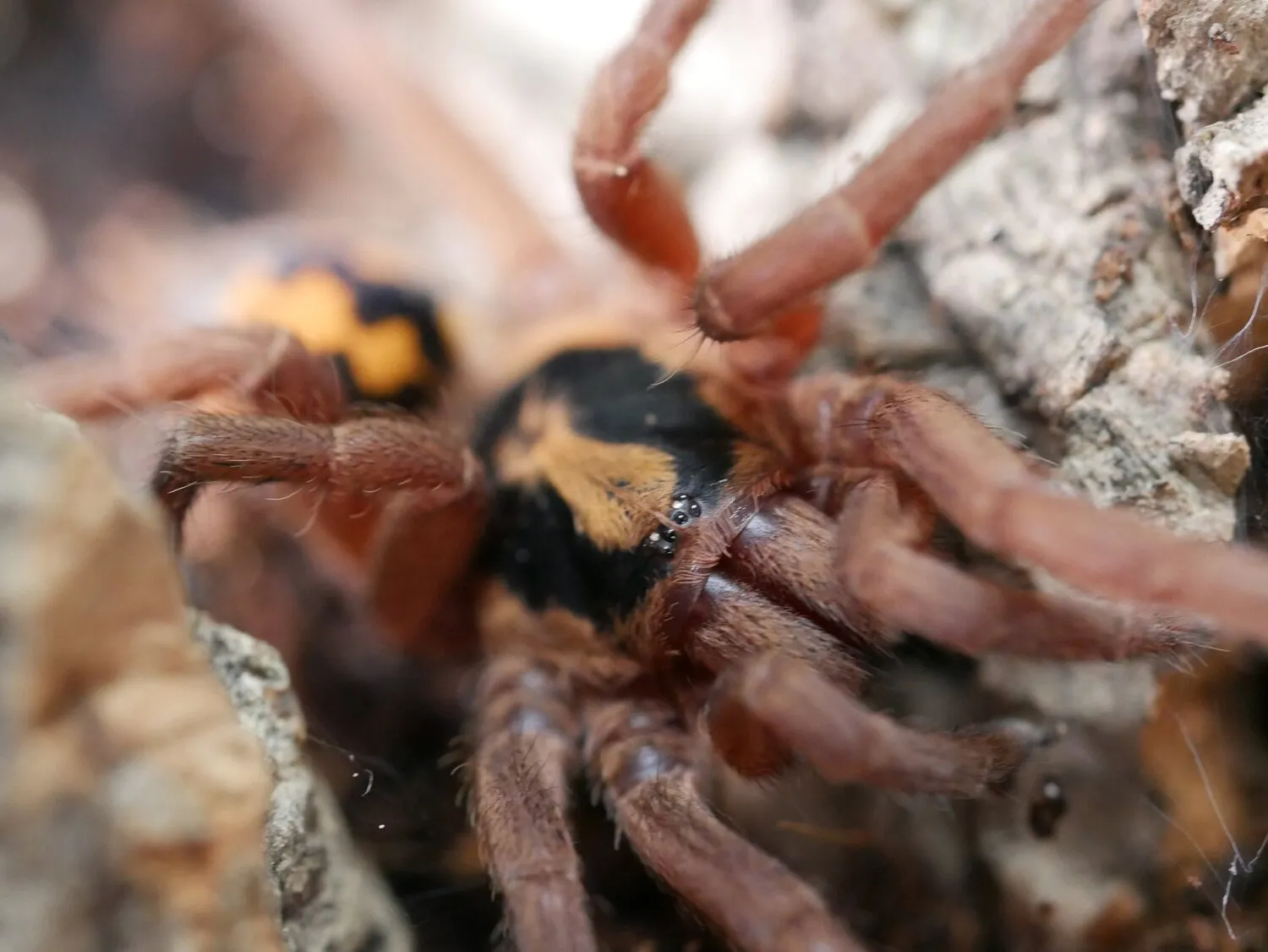
The molting process is a fascinating yet delicate event. It starts with the tarantula becoming lethargic and often refusing food. The tarantula will usually lay on its back, and the old exoskeleton will split open, allowing the spider to pull itself out. This process can take several hours, during which the tarantula is extremely vulnerable. Once free of the old exoskeleton, the tarantula is soft and pale, and it will take several days or weeks for its new exoskeleton to harden. During this period, it is essential to avoid disturbing the tarantula or feeding it, as its fangs are not yet hardened, making it unable to feed properly. The success of each molt is crucial for continued growth and the overall health of the spider. This process showcases the adaptability and resilience of these creatures.
Factors Influencing Molting Frequency
Several factors influence how often a PPT molts. The most significant is the tarantula’s age and growth stage. Spiderlings molt more frequently than adults to accommodate their rapid growth. Diet and nutrition play a vital role as well. A well-balanced diet provides the necessary nutrients for exoskeleton development. Environmental conditions, such as temperature and humidity, are also important. Optimal humidity helps the tarantula shed its old exoskeleton. The size and availability of prey contribute to the molting frequency; more food can lead to faster growth and more frequent molts. Genetics also play a part; some individuals may naturally molt more frequently than others. Providing the right conditions can help ensure your PPT molts successfully and grows at a healthy pace.
Fact 2: Diet and Nutrition Impact
Diet and nutrition have a significant impact on a Pumpkin Patch Tarantula’s growth rate. A balanced diet, rich in essential nutrients, is crucial for healthy development and molting. The quality and quantity of food directly affect how quickly the tarantula grows and molts. Insufficient nutrition can lead to stunted growth, delayed molting, and overall poor health. Conversely, overfeeding, especially in spiderlings, can lead to accelerated growth, which can sometimes cause premature molting or health complications. Understanding the nutritional requirements of a PPT is essential for proper care. The right diet supports the formation of a robust exoskeleton and ensures the spider’s overall vitality. A well-fed tarantula exhibits vibrant colors, increased activity levels, and a longer lifespan.
Essential Nutrients for PPT Growth
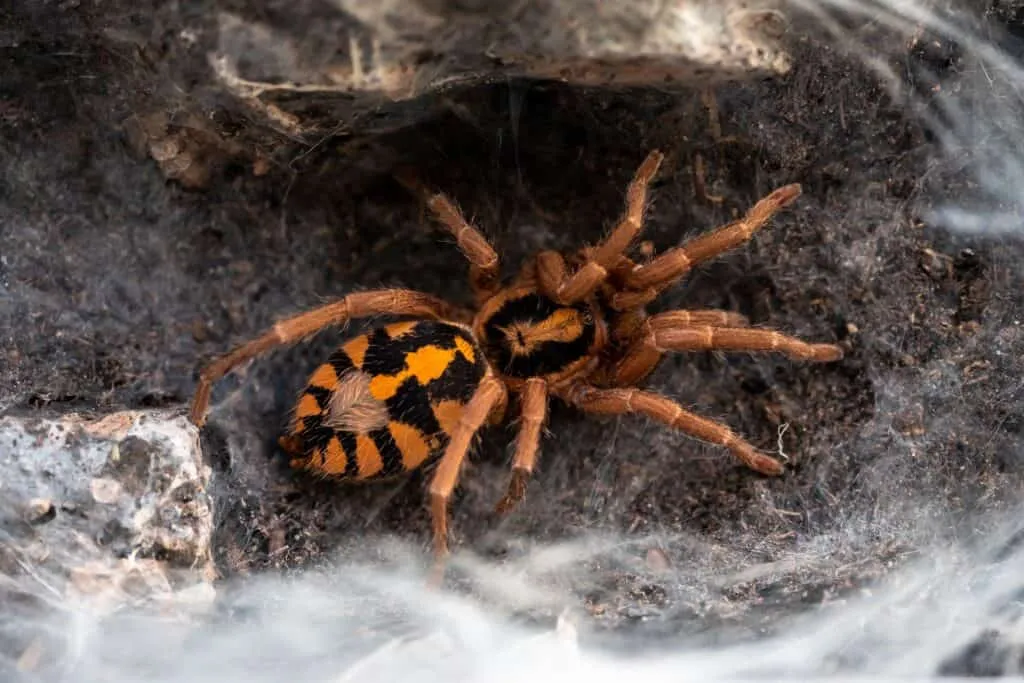
For optimal growth, Pumpkin Patch Tarantulas need a diet that includes a variety of insect prey. Crickets, mealworms, and roaches are excellent food sources, providing essential proteins, fats, and chitin – a key component of the exoskeleton. Calcium is also important, which can be provided through gut-loading prey insects with calcium-rich foods or dusting them with a calcium supplement before feeding them to the tarantula. Vitamins, such as vitamin D3, are crucial for the proper absorption of calcium. It’s beneficial to vary the diet to ensure the spider gets a wide range of nutrients. Providing a diverse diet helps prevent nutritional deficiencies and supports overall health. A well-balanced diet is key to supporting the tarantula’s growth and ensuring a healthy and fulfilling life.
Feeding Frequency and Prey Selection
The frequency of feeding depends on the tarantula’s age and size. Spiderlings should be fed more often, typically every other day or every day, while adults can be fed once or twice a week. The size of the prey should be appropriate for the tarantula’s size – the prey should be no larger than the spider’s abdomen. Overfeeding can lead to obesity and potential health problems, while underfeeding can slow down growth. Offering a variety of prey not only ensures a balanced diet but also provides enrichment for the spider. The prey should be healthy and free from pesticides to prevent the tarantula from ingesting harmful substances. Monitoring the spider’s eating habits and adjusting the feeding schedule accordingly can help maintain optimal health and a proper growth rate. Always remove uneaten prey to prevent stress or potential harm to the tarantula.
Fact 3: Temperature and Humidity Effects
Temperature and humidity are crucial environmental factors influencing the growth of Pumpkin Patch Tarantulas. These factors affect the tarantula’s metabolism, molting process, and overall health. Keeping the temperature within the recommended range is essential; temperatures that are too low can slow down the tarantula’s metabolism and growth, while excessively high temperatures can be harmful. Humidity plays a vital role in the molting process; it keeps the exoskeleton flexible and helps the tarantula shed it properly. Maintaining the correct temperature and humidity levels will encourage healthy molting, efficient feeding, and overall well-being. Regularly monitoring and adjusting these environmental factors is crucial for captive care, ensuring optimal growth rates and a healthy life for the tarantula.
Optimal Environmental Conditions
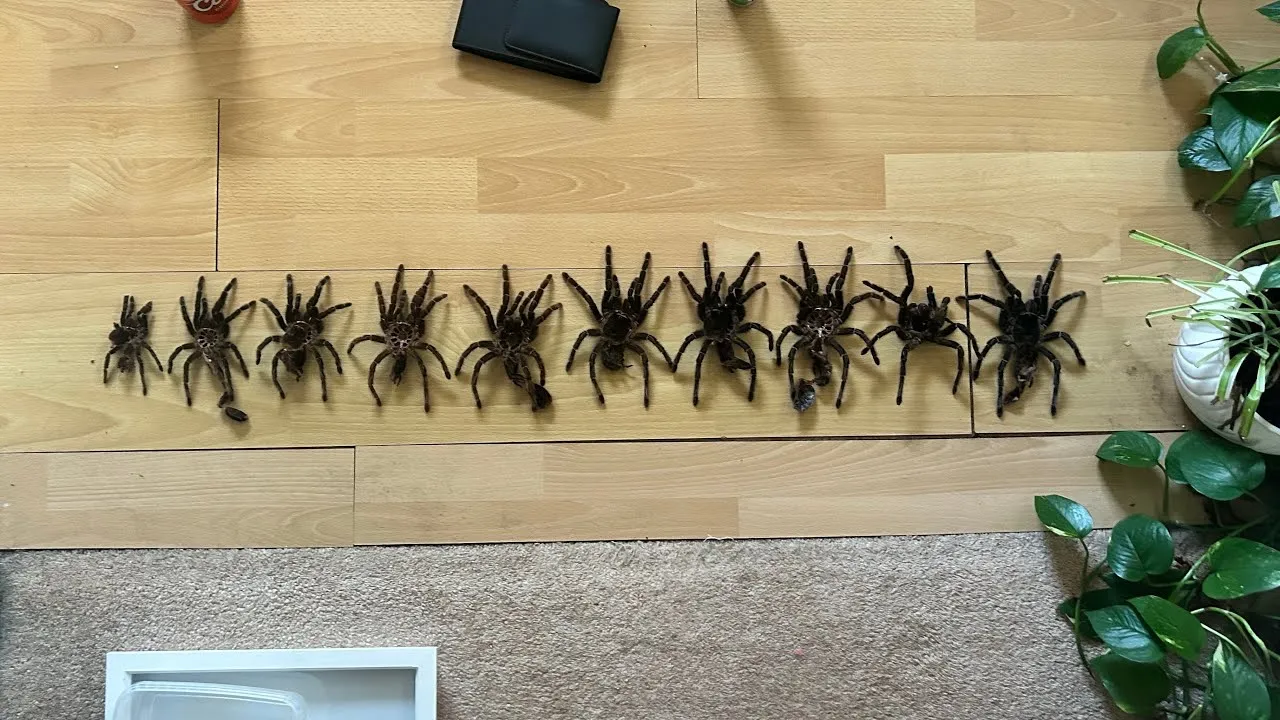
For Pumpkin Patch Tarantulas, an ideal temperature range is between 75°F and 80°F (24°C and 27°C). This range supports their metabolism and encourages healthy growth. Humidity should be maintained between 60% and 70%. This level is optimal for successful molting and helps the tarantula breathe comfortably. The enclosure should be equipped with a thermometer and hygrometer to monitor these levels. Using a heat mat or a low-wattage incandescent bulb can help maintain the correct temperature. Humidity can be maintained by misting the enclosure with water every few days and providing a water dish. Proper ventilation is also necessary to prevent mold growth while maintaining humidity. Providing the right environment is important for your tarantula’s long term health and growth.
How Humidity Affects Molting
Humidity significantly impacts the molting process. When humidity is too low, the exoskeleton can become too brittle, making it difficult for the tarantula to shed the old skin, which can lead to a failed molt and potentially death. Adequate humidity softens the old exoskeleton, allowing the spider to extract itself more easily. In addition, humidity helps prevent dehydration during molting, which can further complicate the process. Providing a suitable level of humidity is thus critical for the successful molting of a PPT. Regularly misting the enclosure and monitoring humidity levels are essential for maintaining a healthy and safe environment for your tarantula. During the molting process, the tarantula’s well-being is highly dependent on the surrounding humidity.
Fact 4: Age and Size Comparison
The age and size of a Pumpkin Patch Tarantula are closely related, as the tarantula grows larger with each successful molt. Understanding the different stages of growth can help in proper care and provide insights into the spider’s needs. Spiderlings, juveniles, and adults each have unique characteristics and requirements. The age of a PPT can affect its growth rate. The growth rate slows down as the spider reaches adulthood. Comparing the size of a tarantula to its age helps to monitor its health and overall development. Keeping track of molting frequency and size changes can provide valuable information for caregivers. Knowing the average sizes for each stage of life provides a baseline for assessing the health of your tarantula.
PPT Growth Stages
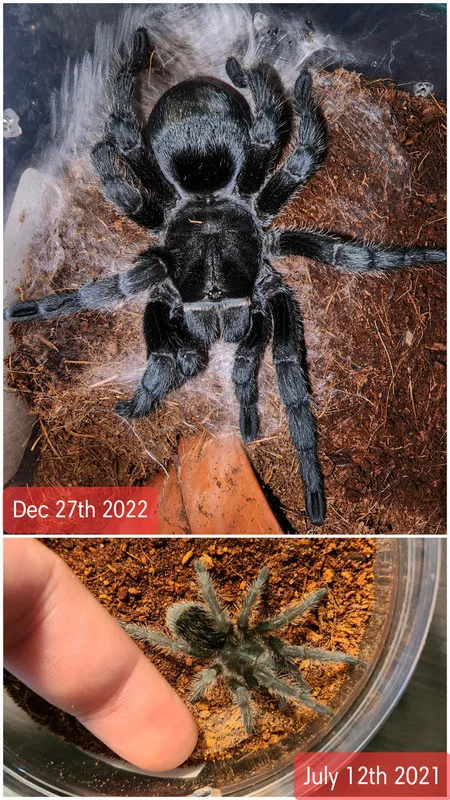
Pumpkin Patch Tarantulas go through distinct growth stages. Spiderlings are the smallest and most delicate stage. They are very small and molt frequently as they grow quickly. Juveniles are the growing-up stage, they are larger, more robust, and the molting frequency decreases. Adults have reached their full size, and their molting frequency is significantly reduced, typically occurring once or twice a year. The transition through these stages is marked by changes in appearance, feeding habits, and overall behavior. Each stage requires specific care considerations, such as appropriately sized prey and habitat adjustments. The different stages highlight the life cycle of a PPT, its changes through time and the care requirements.
Measuring PPT Size
Measuring the size of a Pumpkin Patch Tarantula is typically done by measuring its leg span. The leg span is the distance from the tip of one front leg to the tip of the opposite leg when the spider is stretched out. It is a reliable indicator of the tarantula’s size and growth progress. Accurate measurements help you track the tarantula’s development and assess whether it’s growing at a healthy rate. It is helpful to keep records of each measurement, especially after each molt, to monitor the spider’s progress. During molting the exoskeleton can be measured to determine changes in size. This tracking helps you determine any changes that need to be made to the tarantula’s care. Knowing the tarantula’s current stage helps you understand its needs.
Fact 5: Growth Rate Variations
The growth rate of Pumpkin Patch Tarantulas can vary significantly, depending on several factors. While the general growth pattern is predictable, individual spiders may grow at different rates. These variations are influenced by genetics, diet, and environmental conditions. Some tarantulas may grow more rapidly, while others may develop more slowly. This variability is natural and is a key aspect of tarantula biology. Understanding these variations can help owners provide appropriate care and avoid unnecessary concerns. Factors like diet can be controlled by the owner. It’s important to not compare your tarantula to others and to focus on providing for the spider’s individual needs. Genetic factors that are beyond the owner’s control play an important role in the growth rate.
Male vs. Female Growth Rates
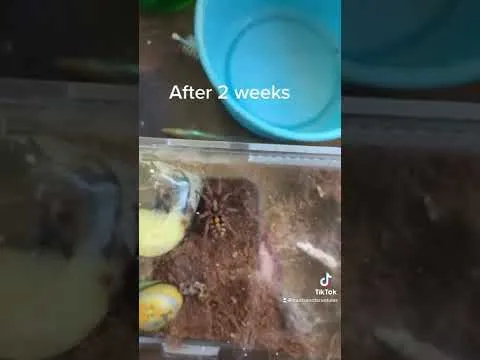
One notable variation in growth rates is between male and female Pumpkin Patch Tarantulas. Generally, female PPTs tend to live longer and grow to a larger size than males. Females often have a slower, more sustained growth rate, enabling them to molt and reach maturity at a larger size. Male PPTs typically mature faster but reach a smaller size and have a shorter lifespan. This difference in growth and lifespan is related to the reproductive strategies of the two sexes. The faster growth of males allows them to reach maturity more quickly and reproduce before their time runs out. The different growth rates between males and females is a crucial consideration for keepers.
Genetics and Individual Differences
Just like humans, Pumpkin Patch Tarantulas have genetic variations that can influence their growth rates. Some PPTs may have inherited traits that lead to a faster or slower growth pattern. These genetic factors interact with environmental conditions to determine how quickly a tarantula grows. Individual differences can manifest even in the same brood, highlighting the complexity of spider biology. Providing a balanced diet and optimal living conditions supports healthy growth regardless of the genetic makeup. The study of genetics can help understand these individual variations. Observing the tarantula’s growth over time will assist in understanding its individual characteristics. Understanding individual differences will enable owners to provide the best possible care for their PPT.
Caring for Your Growing PPT
Enclosure Setup
Setting up the correct enclosure is crucial for a Pumpkin Patch Tarantula’s growth and well-being. The enclosure should be appropriately sized for the spider’s current stage, providing enough space for movement and activity. For spiderlings, a smaller enclosure is often preferred to make feeding easier and to reduce stress. As the tarantula grows, the enclosure size should be increased accordingly. The enclosure should have a secure lid to prevent escape. It must also provide proper ventilation to maintain air circulation and prevent the build-up of humidity. A good substrate is essential, providing a natural environment, allowing the tarantula to burrow, and helping maintain humidity. The setup must provide hiding places, such as cork bark or artificial plants, where the tarantula can retreat and feel secure. The proper enclosure setup sets the stage for the health and growth of the PPT.
Substrate and Hiding Places
The substrate is the foundation of the enclosure. It should be deep enough for the PPT to burrow, which is a natural behavior. Suitable substrates include a mix of peat moss, coco fiber, and vermiculite. This blend provides moisture retention, proper drainage, and a safe environment. The substrate should be kept slightly moist, but not wet, to maintain humidity levels. Hiding places are also essential. Cork bark, artificial plants, and other decorative elements can provide security and a place for the tarantula to retreat. These hiding spots reduce stress, allowing the PPT to feel safe and secure within its enclosure. Providing a variety of hiding places allows the spider to choose its preferred shelter. The substrate and hiding places are two critical components of a healthy enclosure environment for a growing PPT.
Water and Humidity Management
Maintaining appropriate water and humidity levels is vital for the health and growth of a Pumpkin Patch Tarantula. A shallow water dish should be provided at all times, allowing the tarantula access to fresh water. The water dish should be regularly cleaned to prevent contamination. Humidity levels should be maintained by misting the enclosure with water every few days. The frequency of misting depends on the substrate type and the ventilation of the enclosure. A hygrometer is an essential tool for monitoring humidity levels. If the enclosure has high humidity, ensure there is proper ventilation to prevent the build-up of mold. These practices will support proper hydration, essential for molting and overall health, providing a comfortable and thriving environment for your PPT.
Feeding and Health
Providing a balanced diet and maintaining good health are crucial for the growth of a Pumpkin Patch Tarantula. The correct feeding frequency and size of prey are important. Spiderlings require more frequent feedings than adults, adjusting the prey size to the tarantula’s size to avoid overfeeding. Always offer a variety of insect prey, such as crickets, mealworms, and roaches. It is important to maintain the enclosure’s cleanliness and hygiene to prevent the spread of diseases. Regularly inspect the tarantula for any signs of illness or injury. Providing proper care including these elements ensures the PPT lives a healthy, long life. Healthy eating habits directly contribute to a robust growth rate. Observing your tarantula’s eating habits is a sign that all is well.
Common Health Issues and Prevention
Pumpkin Patch Tarantulas, like any pet, can encounter health issues. Dehydration, caused by low humidity or lack of water, is a common concern. Providing a consistent water supply is key to preventing this. Parasites can be another issue. The introduction of parasites can come from the prey that is fed to the tarantula. Quarantine new insects before feeding them to your spider. Infections may occur if the enclosure isn’t kept clean and properly maintained. Symptoms of these issues include lack of appetite, lethargy, and changes in appearance. Regular observation helps to detect any potential problems early, which allows for prompt intervention. A clean enclosure, good hygiene, a proper diet, and a stress-free environment will help to prevent health problems.
Conclusion
Understanding the growth rate of a Pumpkin Patch Tarantula is essential for providing proper care and ensuring its well-being. From molting frequency and dietary needs to environmental factors and enclosure setup, each element plays a crucial role in the PPT’s development. By providing the right conditions, you can help your tarantula thrive, witnessing its fascinating growth journey. Remember that patience and consistent care are key to a thriving tarantula. Enjoy the unique experience of keeping and caring for these beautiful creatures, observing their fascinating behaviors, and appreciating the wonder of their life cycle. The journey of keeping a Pumpkin Patch Tarantula is a rewarding experience for any arachnid enthusiast.
